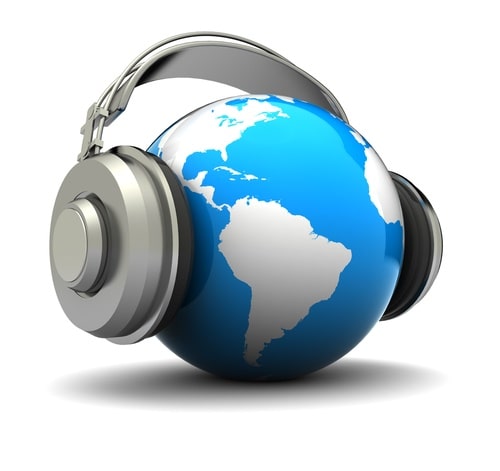
Yes, it often seems like a video-world, but audio localization is important as we continue to shrink the globe and do business across cultures, languages, and countries.
Today’s most successful global companies translate all their product-related voice recordings into the languages of all their different target markets. This process is called audio localization.
What is audio localization?
Audio localization is the process of taking sound content present in multimedia assets such as recordings or videos and adapting it for a new market. Language is a major factor in adapting the audio content but is not the only step in the process.
3 Tactics To Boost Your Localization Strategy
Audio localization includes steps like writing and translating scripts, recording vocals, and editing and testing the final product for accuracy and effectiveness.
But, it can get complicated…
When multiple teams and translation agencies are involved, there are separate processes and price lists, as well as different people to talk to for each project and language.
Here’s a summary of the major steps in audio localization:
16 Steps For Audio Localization Projects:
1. Format your script according to audio recording specifications
An audio script must strictly adhere to formatting guidelines to ensure that the recording proceeds smoothly and efficiently. This is easy but not doing it right is a recipe for headaches. Ask your studio for an audio script template. Ideally the script is in table format and each row in the audio script corresponds to one audio file.
2. Transcribe and translate the audio script
Simply writing down the words that are going to be spoken and recorded will make it much easier for voice actors to know what their lines are. Translating this script into the target language also must be done before any recording can begin (especially for a native speaker.)
3. Conduct a local review of the translated scripts
You can do this through client partners. Their feedback will help you determine whether you need to make changes.
4. Place time-stamps on the script
For recordings where timing is a factor, indicate in the script when the speaker is supposed to say particular sentences or phrases.
5. Make pronunciation guidelines available
If there are specific words that require a certain pronunciation, make notes for the voice actors. Review the entire script for any words that can vary in the way they’re spoken. Often a good way to identify potentially troublesome words is to have someone test read the script out loud.
6. Decide if you need to hire professional voice actors
You have many ways to obtain voice talent for your projects — from computer simulated voices to different levels of human voice talent.
7. Always ask for voice samples before choosing voice talent
You may need multiple voices or different genders and age groups, or a particular style or tone. Find vocal actors that fits the character you need projected.
8. Limit the number of voices
Usually you want to spend less on a localized recording than on the original product. One way to keep costs down is to use fewer voices. Even if you need six speakers you can often find voice talent that can do more than one voice.
9. Leave space in a video for expansion
This is important if your audio will be matched with a video and when you’re translating from a very compact language like English. Translating into Spanish, Russian, or Japanese can easily increase your audio content by 30%. You want to be certain your on screen visuals match up with the audio.
10. Rehearse the script
Studio time is expensive. Practice running through the script beforehand. The less time it takes to record the audio, the less you’ll pay.
11. Record the script, with professional equipment
You want a high quality recording so your audio will make a great impression. Don’t try to save money in this area.
12. Edit the audio recording
An audio engineer can make adjustments to the speaker’s volume and tone. Also, any unwanted sounds like breathing, hiccups and coughs, or background noise can be removed from the recording.
13. Always double and triple check the quality of the language
The best audience to have review the recording is a typical member of your target market. Make sure the language will be understandable in and appeal to the target market. Of course, the earlier in the process you do this, the better.
14. Generate the final file format
The format of the audio file will be different for different audio localization projects, depending on how your audio product will be used.
15. Assimilate the recording into its final destination
This simply means integrating the product into the platform it’s going to be used in, such as an e-learning module or a video.
16. Learn. Never consider an audio localization project done.
Watch for the impact it has. Be willing to learn how to continually improve the quality and effectiveness of your audio translations.
Taking Your Website Global Through Localization
This was originally published on April 4, 2014 and has been updated and expanded for freshness






Comments are closed here.